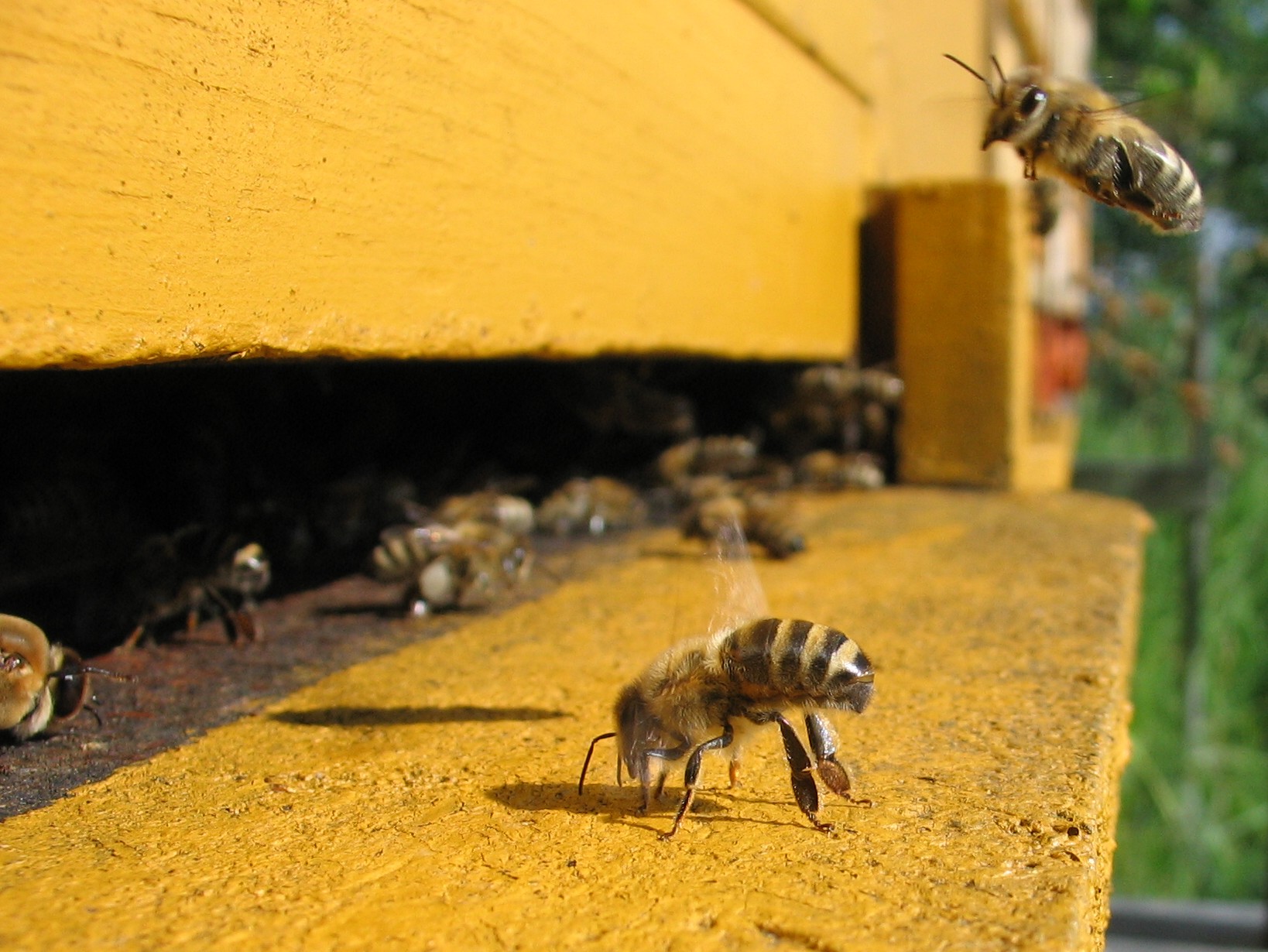
Honey bees (especially the species Apis mellifera), one of the most important pollinators nowadays, are facing a rigorous issue which was largely found since 2006 in the USA: the colony collapse disorder (CCD)(source). Also known as many other names, including disappearing disease, spring dwindle, May disease, autumn collapse, and fall dwindle disease, the CCD can cause a large number of worker bees disappeared. Since most of the plants’ species we used as food need honey bees as a pollinator, the intensive agricultural system including commercial agriculture has impacted the most.
The bee colonies that have influenced by the CCD will first show the following syndrome: insufficient workforce to maintain the brood that is present, workforce seems made up of young adult bees, colony members non-welling to consume provided sugar syrup and protein supplement. While the major symptom is that the adult worker bees would totally disappear with no dead body in front of or beside the colonies, also capped broods and food stores would exist in those colonies while the reaction against the attacked by hive pests would significantly be delayed. (source)
The cause of the CCD is still remaining unknown even until now, however, the scientists have come out with some hypothesis of the mechanism of this disease, including Israeli acute paralysis virus, acute bee paralysis virus and Kashmir bee virus, microsporidian gut parasite Nosema ceranae, Neonicotinoid systemic insecticides, delayed chemical treatments for Varroa mites, nonetheless, there are other research suggest that some environmental elements are also the reason for bees occurred this syndrome such as poor weather condition or long-distance transport of hives to nectar sources or pollination locations.
There are about one-third of agricultural products need honey bees as a pollinator, including almonds, peaches, apples, pears, cherries, raspberries, blackberries, cranberries, watermelons, cantaloupes, cucumbers, and strawberries. However, after the honeybees have disappeared, the farmers must pollinate themselves which increase the cost of those products. A similar situation also occurred in someplace in Europe and China where the artificial pollination for apple trees is a high personal cost and time-consuming job which can increase the price of an apple. (source)
Since the CCD can cause such severe impact on agriculture and even human life, some follow-up actions are needed urgently. For the scientist, to find out the cause of the CCD and the way to prevent it is the priority. For the farmers that have been affected, alternative ways of artificial pollinating efficiently or even inducing new pollinators are actions in need. Nevertheless, avoiding applying only a few species when farming to prevent the collapse of the ecosystem and the following disasters is very important in the sustainly agricultural system.




